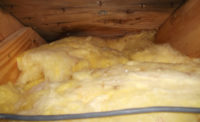Building a five-star, 500-room flagship hotel for Radisson Blu on a tight schedule was tough enough. But in 2012, Mother Nature also gave Minneapolis-based Mortenson Construction its hottest-on-record summer to add to the challenge of tight temperature and humidity specifications regarding the installation of cabinetry and millwork.
For decades, Radisson Blu has been well known as a luxury hotel brand in Europe and Asia. To bring the brand to the U.S. in a big way, Radisson located its flagship property at the Mall of America in Minneapolis, the largest retail mall in the country. Construction was witnessed by thousands of prospective customers every day, providing Mortenson with a constant aesthetic challenge: minimize the messy reality of construction, and don’t damage the finished exterior of this high-fashion, luxury building.
Luxury Demands
Neil Cooper, project superintendent for Mortenson, faced the further problem of keeping the interior of the high-rise tower both dry and cool during millwork installation.
“We had to keep the humidity below 40 percent and the temperature below 78°F at all times, but our weather was much hotter than expected for a Minneapolis summer. Add to that the fact that we could not recirculate the conditioned air,” said Cooper.
“The extra ductwork needed for return air would have had to hang off the side of the building, looking unattractive and creating more risk to exterior finishes during wind and rain storms. So we needed a solution that would maintain conditions even though we had to blow all our conditioned air out of the building several times every hour.”
John Pfeffer, business development manager for Polygon, recommended using multiple high-capacity Polygon humidity control units (HCU), delivering 6,000-8,000 cfm each to the corridors of each floor as millwork installation progressed up the building.
“Our HCU equipment combines cooling and desiccant dehumidification in a single compact package, which reduces the amount of space needed for equipment,” Pfeffer said. “The small equipment size let Mortenson place all of the systems on rooftops out of sight of spectators. Also, the HCU provides cool air even when the outdoor air is far hotter and more humid than expected. Historically in Minneapolis, extreme air conditioning design conditions have been assumed to be 91° and 94 grains per pound. But during the summer of 2012, the outdoor air was regularly above 98˚ with humidity of over 127 grains.”
As Cooper noted, this hot-weather capability was really essential. “The Polygon units kept the rooms below 78° and the humidity at or below 40 percent. Our tight millwork specification was maintained even without cool air recirculation, and our installation schedule stayed on track in spite of record-breaking heat.”
Compact Equipment Hides Well
The equipment location on the hidden rooftop, made possible by the compact, but powerful, HCU design, was also helpful.
“It was a tight fit, which is not ideal,” Pfeffer said. “Placing the equipment on the roofs of the lower parts of the building allowed us to run all the condensate to roof drains. Placing units at each floor could have meant high volumes of condensate flowing down and possibly staining the exterior walls, which was out of the question for this flagship luxury hotel.”
Mortenson’s warranty of the building’s HVAC system also benefitted from the control of temperature and humidity provided by Polygon’s portable equipment. In some projects, a building’s new cooling equipment is used to provide a modest amount of cooling during the installation of the millwork.
That, however, does create some challenges, Pfeffer said.
“Starting the building’s systems during construction puts the manufacturer’s warranty at risk,” he said. “Permanent a/c systems optimized for energy are not designed or built for the large cooling loads of semi-open construction, and certainly not designed for the normal dust and debris of a construction site. Our portable equipment allowed complete control of humidity as well as temperature, without any need to risk the warranty of the high-end cooling equipment installed in the building.”
Great Indoor Air at Low Energy Cost
Another useful feature of Polygon’s once-through cooling and dehumidification system is that by purging the building’s air with fresh air several times each hour for months, the ultimate quality of the building’s indoor air is improved. Purging rids the building of any volatile organic vapors that might be emitted during construction. Consequently, such long-term building flush out qualifies for extra credit under the standards established by the LEED program of the U.S. Green Building Council (USGBC).
“Our desiccant-assisted HCUs provided once-through temperature control for the same energy budget as a recirculating system based on chilled water,” Pfeffer said. “And the humidity control provided by the HCU equipment could not have been matched by chilled-water systems without using far more energy than what the budget allowed.”
Information courtesy of Mason-Grant Consulting, www.masongrant.com.
Publication date: 9/30/2013
Want more HVAC industry news and information? Join The NEWS on Facebook, Twitter, and LinkedIn today!







